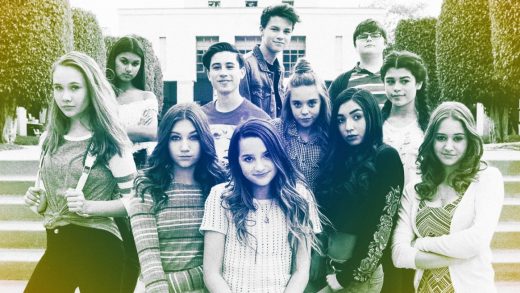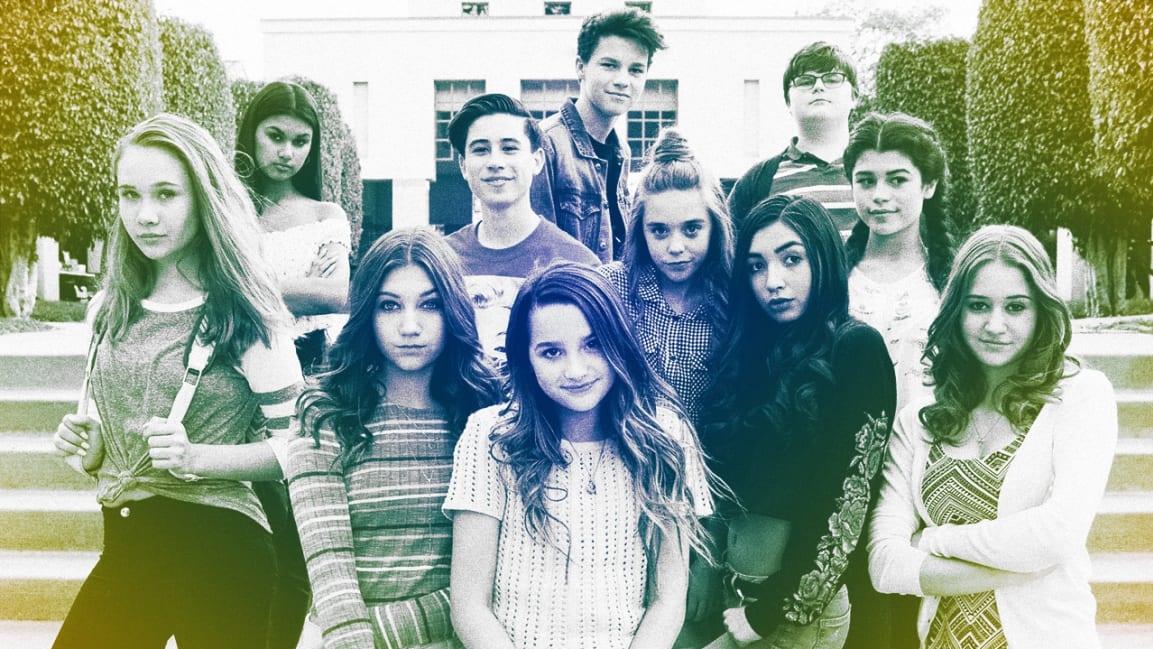Trying to capture Gen Z’s attention? You may want to take a page from Brat TV’s playbook
Network TV is in a mad scramble to catch up with viewing habits that shifted long ago—and it would seem there’s considerable, if not impossible, ground to cover to reach Gen Z.
TV consumption by Gen Z (anyone born between 1995 and 2015) dropped by half in five years, according to Nielsen. Cord cutting is to blame for such a precipitous decline, which has rightly spooked major networks into snatching back the intellectual property (IP) they’d been licensing to the likes of Netflix and Hulu so that they can now create their own streaming services.
But as the streaming landscape becomes even more bloated with newcomers like Peacock, HBO Max, Apple TV+, and Disney+, there’s still one giant to rule them all when considering overall digital video consumption: YouTube.
And what does Gen Z love? YouTube.
According to Pew, 85% of teens say they use YouTube compared to Instagram (72%), Snapchat (69%), or Facebook (51%). Couple that with YouTube’s watch time on TV screens hitting more than 250 million hours per day (Netflix reportedly pulls in 164.8 million hours per day by comparison), and therein lies a unique programming opportunity.
One that a startup called Brat TV is taking full advantage of.
Rob Fishman and Darren Lachtman founded Brat TV in 2017, their next collaboration after having sold their influencer marketing platform Niche to Twitter in 2015. Having been embedded with social platforms, its roster of stars, and their devoted followings, Fishman noticed that Gen Z wanted more than just memes and short clips. There was a space and hunger, he believed, for longer-form content anchored by top social talent.
“At bottom, what we try to be is an entertainment brand that matters to a Gen Z,” Fishman says. “We do that by creating a product that should belong on television but is instead given out for free on YouTube, because that’s where they’re actually tuning in as opposed to the television sets that they don’t want to watch anymore.”
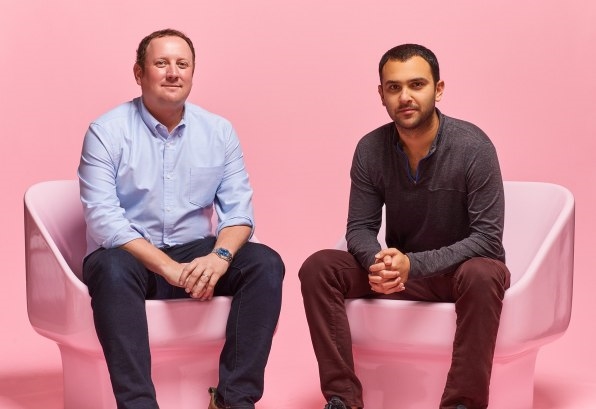
[Photo: courtesy of Brat Network]
Across its current slate of 15 shows, Brat TV has pulled in nearly 13 million unique viewers, with more than 5 billion minutes of watch time. The network’s combined social following of 5 million is up 65% year-over-year.
Brat TV certainly isn’t the first in the space of Gen Z-focused programming on YouTube. AwesomenessTV once rode that brief first wave of YouTube networks that aspired to be the next-generation cable networks. Awesomeness thought it would be Nickelodeon for the YouTube set.
While AwesomenessTV, which is now owned by Viacom (Nickelodeon’s parent company), is still a direct competitor to Brat TV, Fishman and Lachtman’s approach diverges in key areas.
“It almost seems like they’re learning lessons from like the AwesomenessTVs of the world where these businesses overextended themselves—they tried to do too many things at once,” says YouTube marketing expert and founder of agency Epic Signal Brendan Gahan. “Yes [Brat TV is] using influencer talent, but their business is not about becoming a [multi-channel network] and managing talent—it’s about creating IP that they can own.”
Make it fast. Do it cheap. But it’s got to be good
Major networks and streamers have found resounding success with Gen Z with hits like Riverdale, Stranger Things, and 13 Reasons Why. However, Fishman is confident that Brat is delivering the same caliber of storytelling at a fraction of the cost. Brat’s cost of production is $3,500 per minute compared to regular network TV that, on the lower end, can average upwards of $25,000 per minute.
Operating out of a 10,000-square-foot studio space in Hollywood, Brat’s infrastructure allows it to “rinse and repeat and produce at a really low price point,” Fishman says, which would explain how they plan to fulfill a rather aggressive slate of shooting a show every month. Brat TV’s productions are also somewhat streamlined given the fact that all its shows live in the same universe.
Although, it sounds like a recipe for slipshod content, Brat actually delivers relatively polished shows. That said, at the network’s price point, the production quality could never match what the deep pockets of a Netflix could conjure up. However, in Gahan’s opinion, that’s exactly what works in Brat’s favor given how inundated Gen Z is with the kind of phone-generated content across Tik Tok, Instagram, and YouTube.
“[Gen Z’s] tastes are more in tune with that DIY aesthetic,” says Gahan. “Brat is beyond just a vlogger with a camera in their bedroom. But there’s not a necessity to go super high end. Going too high end could be alienating to a lot of people if that’s not what you’re used to. And to a certain extent you might associate that with, ‘That’s what my parents watch.’”
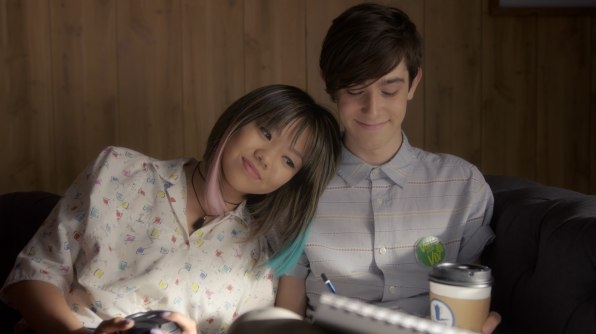
[Photo: courtesy of Brat Network]
“We’re not necessarily chasing those higher budgets,” Fishman says. “We’re very comfortable with where we are. Some of the most successful people in Hollywood have realized that when you find something that works, it’s really about doubling and tripling down on that and not necessarily chasing the bigger and bigger budgets to get something even larger and more glamorous.”
Working with “bratty” brands
“It’s not necessarily YouTube’s job to turn us into a profitable business,” Fishman says. “The challenge, though, is making money.”
At the heart of Brat TV’s current business strategy is direct ad sales. Brat TV belongs to an elite group of organizations on YouTube including Condé Nast, SoulPancake, NBC, and CBS, who are permitted to control which ads run on their channels as opposed to YouTube’s general MO of what you get is what you get.
For Brat TV, that has meant working with such brands as Adidas, Spotify, Extra gum, Subway, Netflix, and, yes, Nickelodeon, for traditional marketing spots as well as in-show product placement. Brat TV also produces custom advertising featuring network talent who actually receive a cut for participating in advertorial content.
“We’ve had a really incredible response over the past six months [building an ad sales team],” Fishman says. “Part of the reason that these big brands are working with us is they themselves are having a hard time reaching this generation on TV.”
Brat TV holds the key to part of a generation whose estimated spending power is anywhere between $29 billion and $143 billion. But Gahan doesn’t necessarily see brand marketing as Brat TV’s most viable avenue for profitability.
“If they want to be a publisher kind of platform and working with brands, I think they’ve got a ways to go. They don’t necessarily have the kind of mainstream credibility or notoriety that every brand manager is going to be knocking at their door right now,” he says. “A lot of early-adopter brands and savvy brands are aware of them, but they don’t have massive scale yet.”
Bigger (and more diverse) star power
Part of how Brat TV is looking to get its name to blip on more brands’ radars is by leveraging the social followings of its talent who also are part of the network’s key demographic. The network has cast over 150 actors and actresses under the age of 25, making up over 90% of the roles on its shows, including Annie LeBlanc, 14 (Chicken Girls), and Mackenzie Ziegler, 15 (Total Eclipse), who have combined Instagram and YouTube followings of 11.84 million and 16.63 million, respectively.
“We haven’t actually done really any paid marketing yet. We’ve really relied on word of mouth and goodwill,” Fishman says. “We produce a ton of branded assets for ourselves and for our talent to share. Their participation definitely drives excitement.”
However, initial excitement over seeing your favorite social-media star in a new show can fizzle. What Sam Silver, head of development at Brat TV, is leaning on to gain and maintain a solid audience are stories and characters that genuinely reflect their sensibilities.
“The younger generation is a lot more open than we realize and give them credit for,” says Silver, who previously wrote and developed shows for Disney and Nickelodeon before coming to Brat TV in June. “We want to do stuff that is a little bit deeper and is thoughtful and has real issues that teens are going through.”
For example, Brat’s flagship and most popular show Chicken Girls features a high school lesbian couple.
“Disney has just started going there, but we don’t have to shy away from those things,” Silver says. “Sexuality is not as big a deal to kids as it is with the older generations—they just want to see it reflected.”
However, both Fishman and Silver admit Brat TV’s current slate doesn’t reflect the full diversity of the audience it’s targeting. Take one scroll through Brat’s list of shows and it’s apparent there’s a dearth of racial inclusivity. Stars like Korean-American Bailey Sok (Zoe Valentine) and African-Americans Kyla-Drew (Crown Lake) and Denzel Dion (Stuck) are just a handful of nonwhite representation.
“I’ll be totally candid, when we first started the company and there was like four or five of us, we were scrambling to cast folks as quickly as possible to try to get our programs on the air,” Fishman says. “We had a lot of early success, which was great. But we had early success with casts who weren’t necessarily as diverse as we would have liked. It’s probably the number-one priority in our company right now: making sure that not only our shows but the people who work on our shows and the message we’re sending is one of diversity and representation.”
Brat is currently working on a show centered on a Chinese-American family, as well as one that will feature the network’s first trans character.
“I think we’re getting close and I think we’re doing better,” Silver says. “With each new show we create, we really try to make sure it looks like our country, like the kids who are watching.”
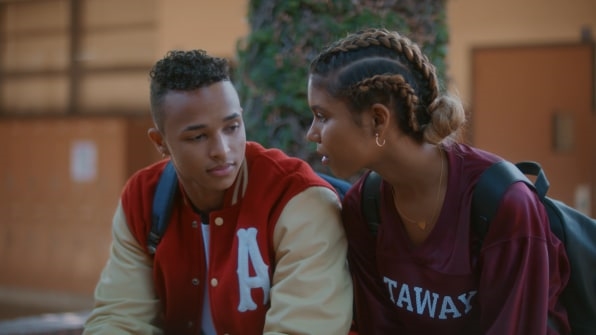
[Photo: courtesy of Brat Network]
The future is IP
Like most YouTube stars, Brat TV’s ambition exceeds what YouTube alone has to offer. Although YouTube will remain Brat TV’s primary platform, Fishman is currently working with MGM both to license the network’s content and develop new shows for streaming platforms. Brat TV is also taking a page out Disney/Hollywood Records’ acting-to-singing-career factory with its own music label featuring show talent. On the merchandising side, Brat TV has expanded beyond branded T-shirts, makeup, and accessories, entering the book industry à la a Chicken Girls series published by Simon & Schuster.
As opposed to relying on brand marketing, leveraging its own IP in a multifaceted approach is how Gahan believes Brat TV will ultimately find the most meaningful success.
“They talked about wanting to spin up a sales teams and do brand integrations and all of that, and that might be extremely profitable for them. But that business requires a lot of overhead,” Gahan says. “If they’re doing these quick, fast turn productions, they could get hung up on brand managers wanting to noodle [over campaigns and ideas]. It has the potential to be more time-consuming and more overhead than maybe they’re set up to handle. So I think the big opportunity is just in themselves.”
Brat TV has a proven concept but the network is still incredibly young. YouTube has been an ideal source to leverage talent and grow an audience, especially for the family-friendly fare Brat TV has to offer. However, with CPMs dwindling and fickle algorithms, Brat TV leaning on and branching its IP is its surest bet to becoming a long-lasting player in the streaming space.
“If you were a TV network 10 years ago, you had a lot of carrier fees coming in, in addition to advertisements. Obviously that’s not the case anymore,” Fishman says. “You need to be a lot more creative and a lot scrappier with how you’re making money.”
Fast Company , Read Full Story
(11)

